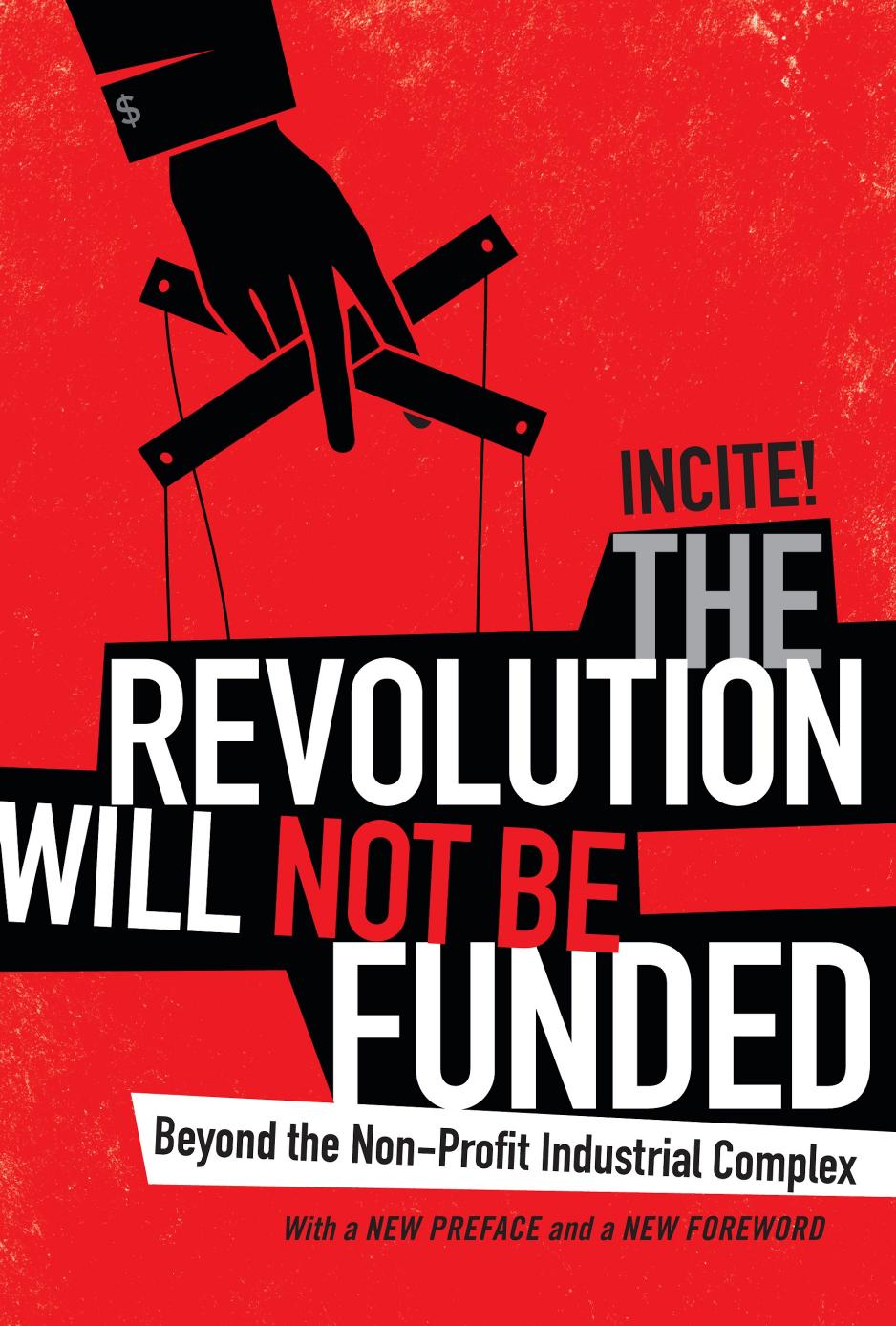The Revolution Will Not Be Funded: Beyond the Non-Profit Industrial Complex by INCITE!

Author:INCITE!
Language: eng
Format: azw3, pdf
Publisher: Duke University Press
Published: 2017-01-12T16:00:00+00:00
the state’s line on the criminalization of domestic violence
In a move to align itself alongside the antiviolence movement, the state increasingly came to structure violence as a crime. This ideology naturalized violence as a crime, and thus emerged normative contemporary vernacular on “violent crimes” and “hate crimes” that conflates violence with crime. Violence is not naturally a crime, yet the interests of the state and the economy are served when violence becomes a crime.13 The criminalization of domestic violence created a dual advantage for the state: the perpetrator became the sole party responsible for violence against women while the state positioned itself against the perpetrator and thereby as an ally of battered women. Criminalization also buttressed the state’s claim that prisons were the solution to domestic violence, a framework that has been proven to the contrary while yielding disastrous results for women of color and their communities.14 Interestingly, this development closely parallels the growth of the prison industrial complex (PIC) and the heightened criminalization of domestic violence through mandatory arrest policies, development of new crime legislation, and steepening sentences for existing crimes.
Federal funding to address violence against women was a key strategy to align the antiviolence movement with the criminalization project. In 1976, the Center for Women Policy Studies received a grant from the Law Enforcement Assistance Administration, the first federal monies made available to address domestic violence. The Center published Response, a newsletter intended to reach a national audience with the hope of fostering support for the funding’s objective: the criminalization of domestic violence, specifically, by improving criminal prosecution rates.15 Through this newsletter and funding, the interests of the criminal justice system and the battered women’s movement were made to look compatible, and domestic violence came to be seen increasingly, both within the movement and in larger society, as a crime. Federal funding pitched the need for a “system-based” response to domestic violence, a move that partnered the antiviolence movement with the prison industrial complex, the medical industrial complex and state social service agencies. The criminalization project ensued, then heightened when two policies that created the largest pools of state funding for antiviolence work became law: the Violence Against Women Act in 1994 (VAWA) and the Violence Against Women Act II in 2005. VAWA I and II merged in policy the interests of the state—to criminalize society, populate the cheap labor force of the PIC, manage the nation’s shifting racial demographics (specificallly, a declining white population) by quarantining more people of color in prison, and deflect attention from its role in the production and reproduction of domestic violence—with the interests of the antiviolence movement.16 To affirm and structure this merger, VAWA created the US Office on Violence Against Women and housed it in the Department of Justice, the federal arm of the PIC. Thus, federal funding has entrenched the ideology of the criminalization of violence against women, doling out “the line” inside billions of dollars of funding.
One of the dangerous effects of the criminalization process is that it has
Download
The Revolution Will Not Be Funded: Beyond the Non-Profit Industrial Complex by INCITE!.pdf
This site does not store any files on its server. We only index and link to content provided by other sites. Please contact the content providers to delete copyright contents if any and email us, we'll remove relevant links or contents immediately.
| African-American Studies | Asian American Studies |
| Disabled | Ethnic Studies |
| Hispanic American Studies | LGBT |
| Minority Studies | Native American Studies |
Cecilia; Or, Memoirs of an Heiress — Volume 1 by Fanny Burney(31324)
Cecilia; Or, Memoirs of an Heiress — Volume 3 by Fanny Burney(30928)
Cecilia; Or, Memoirs of an Heiress — Volume 2 by Fanny Burney(30885)
The Great Music City by Andrea Baker(21195)
We're Going to Need More Wine by Gabrielle Union(18066)
Bombshells: Glamour Girls of a Lifetime by Sullivan Steve(13101)
Pimp by Iceberg Slim(12923)
All the Missing Girls by Megan Miranda(12740)
Fifty Shades Freed by E L James(12443)
Norse Mythology by Gaiman Neil(11875)
Talking to Strangers by Malcolm Gladwell(11863)
Crazy Rich Asians by Kevin Kwan(8342)
Mindhunter: Inside the FBI's Elite Serial Crime Unit by John E. Douglas & Mark Olshaker(7829)
The Lost Art of Listening by Michael P. Nichols(6464)
Enlightenment Now: The Case for Reason, Science, Humanism, and Progress by Steven Pinker(6403)
Bad Blood by John Carreyrou(5761)
The Four Agreements by Don Miguel Ruiz(5502)
Weapons of Math Destruction by Cathy O'Neil(5031)
We Need to Talk by Celeste Headlee(4862)
